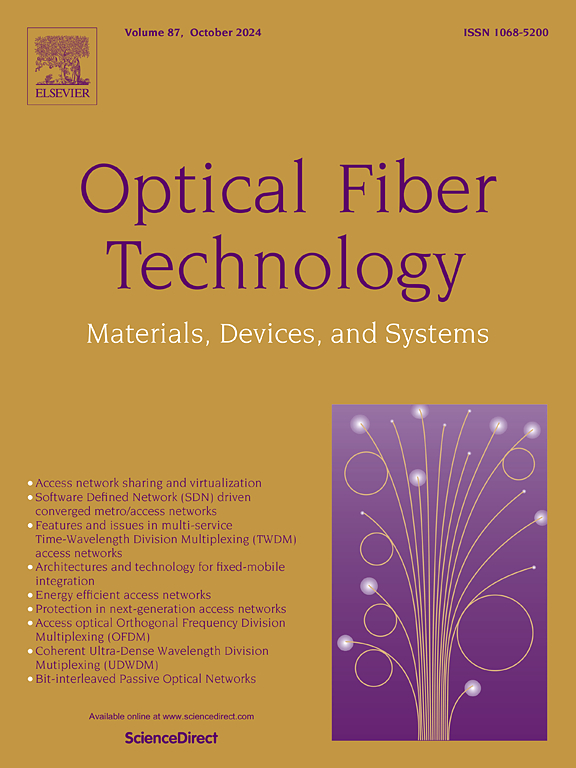A RMSCA algorithm for space division multiplexing elastic optical networks with core switching
IF 2.6
3区 计算机科学
Q2 ENGINEERING, ELECTRICAL & ELECTRONIC
引用次数: 0
Abstract
Space division multiplexing elastic optical networks (SDM-EONs) have attracted much attention due to the advantages of high capacity, flexibility, and spectrum utilization. Space division multiplexing technology enhances the capacity of a single fiber link by using multi-core fiber (MCF). With the support of MCFs, SDM-EONs will become an important form of future optical transmission networks.In order to reduce the blocking rate of the network, this paper proposes a routing, modulation format, spectrum and core allocation (RMSCA) algorithm based on the maximum number of available cores with core switching. The algorithm selects the spectrum block with the most available cores in the entire path for spectrum allocation by using core switching. We perform simulations on two networks, NSF-Net and UBN24, and compare them with the spectrum allocation algorithm with core switching (FF-ISC-RMSCA), which uses first-time adaptation, and the spectrum allocation algorithm with maximum number of cores available (N-ISC-RMSCA), which does not perform core switching. Simulation results show that the proposed algorithm significantly reduces the bandwidth blocking rate and has high spectrum utilization.
带核心交换的空分复用弹性光网络的 RMSCA 算法
空分复用弹性光网络(SDM-EON)因其高容量、灵活性和频谱利用率高的优势而备受关注。空分复用技术通过使用多芯光纤(MCF)提高了单条光纤链路的容量。在 MCF 的支持下,SDM-EON 将成为未来光传输网络的一种重要形式。为了降低网络的阻塞率,本文提出了一种基于最大可用核心数的路由、调制格式、频谱和核心分配(RMSCA)算法。该算法通过核心切换,在整个路径中选择可用核心数最多的频谱块进行频谱分配。我们在两个网络(NSF-Net 和 UBN24)上进行了仿真,并将其与使用首次自适应的带内核切换的频谱分配算法(FF-ISC-RMSCA)和不执行内核切换的带最大可用内核数的频谱分配算法(N-ISC-RMSCA)进行了比较。仿真结果表明,所提出的算法大大降低了带宽阻塞率,并具有较高的频谱利用率。
本文章由计算机程序翻译,如有差异,请以英文原文为准。
求助全文
约1分钟内获得全文
求助全文
来源期刊

Optical Fiber Technology
工程技术-电信学
CiteScore
4.80
自引率
11.10%
发文量
327
审稿时长
63 days
期刊介绍:
Innovations in optical fiber technology are revolutionizing world communications. Newly developed fiber amplifiers allow for direct transmission of high-speed signals over transcontinental distances without the need for electronic regeneration. Optical fibers find new applications in data processing. The impact of fiber materials, devices, and systems on communications in the coming decades will create an abundance of primary literature and the need for up-to-date reviews.
Optical Fiber Technology: Materials, Devices, and Systems is a new cutting-edge journal designed to fill a need in this rapidly evolving field for speedy publication of regular length papers. Both theoretical and experimental papers on fiber materials, devices, and system performance evaluation and measurements are eligible, with emphasis on practical applications.
 求助内容:
求助内容: 应助结果提醒方式:
应助结果提醒方式:


